We can’t bear our diet faces! They’ve finally got the figures they yearned for. Just one problem: it’s taken an unexpected toll
By SARAH RAINEY FOR THE DAILY MAIL
There’s a saying in Hollywood, first coined by the glamorous Sixties actress Catherine Deneuve, which will strike a chord with women the world over: ‘At a certain age, you have to choose between your face and your ass.’
We all know it’s true. Once you get past the age where your metabolism keeps lumps and bumps at bay and your skin is too fresh-faced for wrinkles, you can’t possibly keep both your face and body in a state of youthful perfection.
The middle-aged women who choose to prioritise their faces are easy to pick out in a crowd. Their bodies may bulge in all the wrong places, but they have the enviable visage of a 30-year-old, with line-free foreheads, plump cheeks and dewy skin. All of which draws attention away from their steadily sagging bodies.
Annmarie Sweeney, 44, a healthcare assistant from Cheshire, says that since losing a lot of weight over the past ten months, she now looks in the mirror and doesn’t recognise the woman she sees.
Nigella Lawson said she had no intention of losing weight in 2011 because it would age her – however, after her marriage breakdown she looked noticeably gaunt.
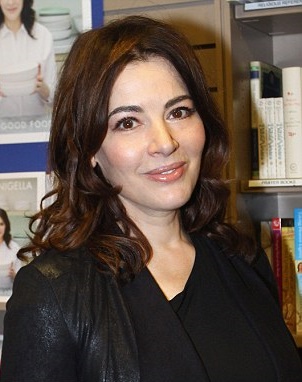
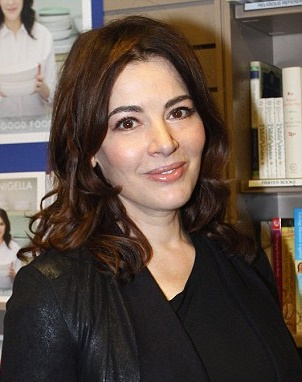
Nigella Lawson, 56, is one such woman. The curvy food writer and chef announced in 2011 that she had no intention of losing weight, despite fluctuating between a size 12 and 16, because she feared it would add years to her face. ‘If I lost 40lb [roughly three stone],’ she said, ‘I would age ten years straight away.’
And the women who have done just that – focusing on their body instead of their face – know all too well what she means. For in a bid to regain the lithe, toned figures of their youth, increasing numbers of middle-aged women are developing a condition known as ‘diet face’.
It occurs when women over 40 lose weight or embark on a strict healthy eating plan. As the pounds drop off, the years start showing up on their faces. Wrinkles and crow’s feet that were once plumped by fat appear out of nowhere; their previously apple-like cheeks look hollow and skin turns sallow.
Jo Laybourn, 44, from Chelmsford, Essex, who works for a children’s charity, says that since she has lost 4st, she’s become conscious of the lines around her mouth.
Rather than recapturing their youth, these women – having finally achieved the figure of a much younger woman – end up looking several years older than they actually are.
Scientists have recognised the phenomenon for some time. In 2009, a team of researchers in the U.S. found that losing as little as 10lb – or the equivalent of one dress size – can age an older woman by four years.
In women over 38, the study authors said, a full face looks younger than a thin, gaunt one. ‘Losing fat from the face gives the appearance of being unwell,’ says Harley Street facial surgeon Dr Ayham Al-Ayoubi.
‘With weight loss, many people develop a hollow area under the eyes and their skin becomes dehydrated and wrinkly, making them look old. A plump, arched face is a sign of youth; one that is concave and bony looks far older.’
The gaunt, hollow-cheeked look has become commonplace among middle-aged A-list actresses and models – so much so that surgeons are fielding soaring numbers of requests for procedures that reverse its effects. A recent survey of surgeons worldwide revealed a 50 per cent rise in cheek plumping and fillers among 40 to 59-year-olds in a bid to restore their youthful complexions.
Among some of the most high-profile sufferers are stars whose extreme diet regimes have taken a heavy toll on their looks.

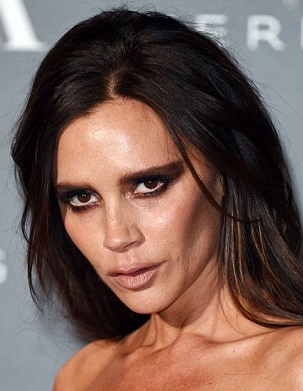
In the 20 years since she came to fame, Victoria Beckham, 42, has gone from chubby-cheeked Spice Girl to having jutting cheekbones, circles under her eyes and a permanently pinched expression.
When, in 2014, she appeared at an awards ceremony in London after a period out of the spotlight, fans remarked that her face looked ‘old’, ‘miserable’ and ‘too skinny’. Madonna, pictured left in 2015 and right in 2008, has seen her looks change vastly due to different dieting and exercise regimes Victoria Beckham, 42, had fuller cheeks as a Spice Girl She now has jutting cheekbones and a ‘pinched’ look.
Madonna and Friends actress Courteney Cox have the affliction, too, attributing their drawn, lined faces to an obsession with keeping their figures in shape.
‘In Hollywood, to get your bottom half to be the right size, your face may have to be a little gaunt,’ admitted 51-year-old Cox, who works out four times a week to maintain her bikini body.
Madonna, 57, a notorious fitness obsessive, conceded: ‘Several years ago I knew I had to choose between my face and my body. I always knew I’d choose the latter.’
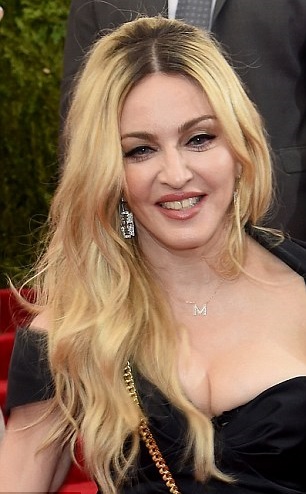
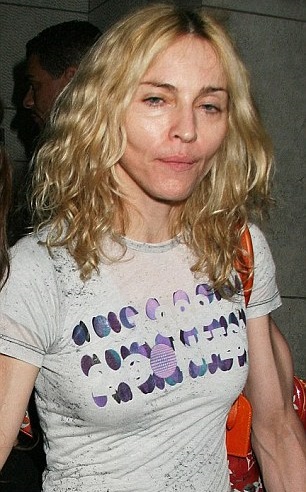
Actress Courteney Cox, 51, has attributed her drawn, lined face to an obsession with keeping in shape.
She works out four times a week to maintain her bikini body.
So what exactly causes ‘diet face’ – and can anything be done to reverse it?
The key lies in the make up of the human face, which is comprised of several different fat compartments, located both immediately under the skin and within our bone structure. When we’re young, these compartments are readily supplied with nutrients, keeping them plump and youthful. As we age, however, these nutrients are diverted elsewhere in the body, causing the fat pockets to start deflating.
‘This leads to gravitational descent,’ ‘Volume loss in one area can affect neighbouring tissues, leading to a cascade of ageing signs: eyebrow deflation, jowling and neck laxity.’ Annmarie says her face now looks drastically different – when she was bigger it was round and plump.
This natural deflation begins in our late 30s and is accelerated by weight loss, which breaks down the scaffolding under the surface of our skin and causes the face to sag. ‘Older, thinner skin is more vulnerable to volume changes of the fat compartments, ‘Weight loss unveils the bony anatomy of the face, especially in the forehead and eyes, which in turn accelerates the ageing process.’
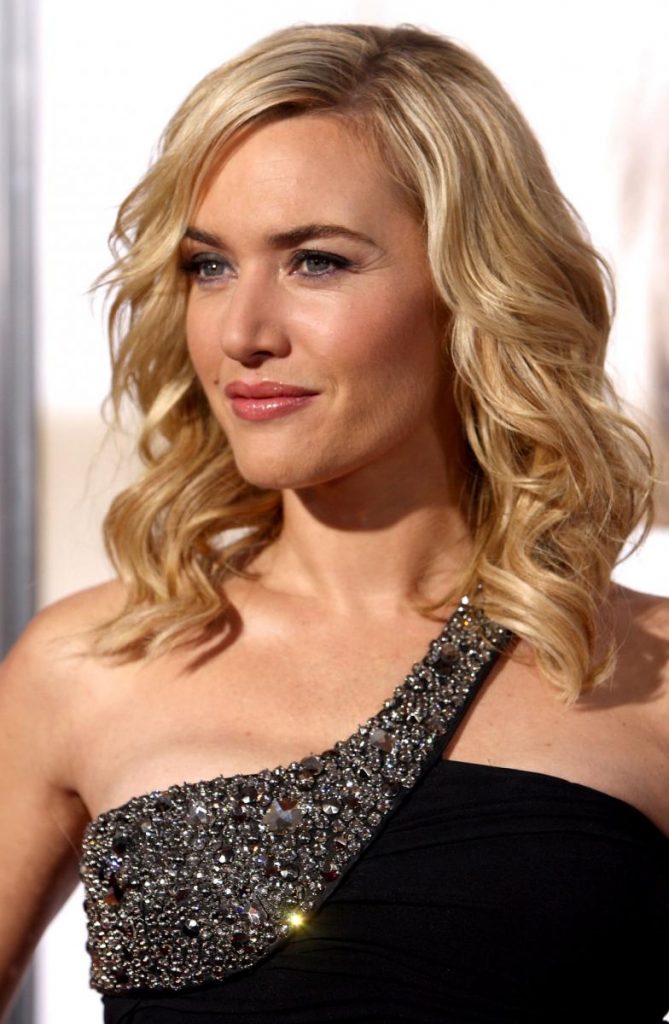
‘The ligaments in the face support the soft tissue. If weight is lost, these can stretch and relax, contributing to the face appearing to sag,’ she explains.
Dr Ayham Al-Ayoubi: When we lose weight, it tends to disappear from the face first, followed by the breast, buttocks and finally the hips and abdomen. This is because fat in the face is superfluous and our bodies aren’t biologically primed to retain it, whereas the body hangs on to fat in the hips and buttocks for childbearing purposes. As a result, restricting calories can cause the face to become malnourished.
‘As a survival method, the body starts to divert nutrition to the essential organs, so the non-essential parts of the body – the skin and soft tissues of the face, neck, decolletage and hands – suffer,’ he says.
Asian women, for example, are born with more fat in the deeper layers of their skin and so age naturally at a slower rate, even when dieting. Caucasians have thinner skin, so when they diet in middle age, ‘their face will behave like a deflated balloon’.
So why is it that dieting doesn’t have the same ageing effect on younger women?
Until the age of 35 or 40, our skin is pumped full of collagen – the natural protein that gives it strength and elasticity. This declines at a rate of 1 per cent to 1.7 per cent a year from that point onwards, and drops dramatically around the time of the menopause, due to the decline in the amount of oestrogen our bodies are producing.
Without collagen, the skin loses its ability to ‘bounce back’ into shape, so as the fat in the face melts away, it’s left slack and droopy rather than stretched tight. We’re also more prone to losing fat in the face as we get older, and less able to replace it.
This is because younger women have a thicker dermis – the inner layer of skin containing the blood vessels and hair follicles – which acts as an extra shield for our looks. ‘This makes the face more resilient to the underlying volume changes of the fat pockets.

Dr Ayham Al-Ayoubi recommends a course of Sculptra treatment to stimulate collagen production, that can plump out the deflated fat pockets in the face. The results of the Sculptra treamtent can last up to three years’
With all this to contend with, it’s worth bearing Catherine Deneuve’s old adage in mind. And perhaps, when you reach that certain age, you might choose to put your body second and your face first.
To read more about Sculptra click here.
To read more Blogs by Dr Ayoubi click here.





